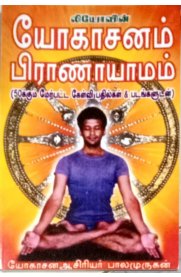Breaking News
Joga Siddha Boganatara T N Ganapati
воскресенье 24 февраля admin 93
Buy Online The Yoga of Siddha Boganathar (Vol. Ganapathy Book from Ganges India. Beautiful Ornate Ganesha Wearing Turban Brass Statue. Der Yoga des Siddha Boganathar (German) Paperback – 2009. By ganapathy-t-n (Author) Be the first to review this item.  See all formats and editions Hide other formats and editions. Price New from Used from Paperback 'Please retry' $27.95.
See all formats and editions Hide other formats and editions. Price New from Used from Paperback 'Please retry' $27.95.
$17.95 Buy It Now 26d 5h, $4.27 Shipping Estimate,, Seller: (172) 100%, Location: Davenport, Iowa, Ships to: Worldwide, Item: 60 THE YOGA OF SIDDHA AVVAI By S.N. Kandaswamy, Ph D, 2005. ISBN: 1-895383-28-5 From the foreword by M.
Govindan: Avvai is considered to be one of the most influential sages among the Tamil speaking people of south India. Her poems and literary works, dating from the first millenium of the modern era are recited by millions of Tamil speaking school children in south Asia to this day.
A huge statue of her stands along Marina Beach Drive, in Chennai, along the shore of the Indian ocean. The values and wisdom which her poems convey however, has a source. It is this source which the present volume, 'The Siddha Yoga Tradition of Avvai and Her Literary Work: Vinayakar Akaval,' sheds much new light upon.
The author takes us on a literary, historical and spiritual tour of ancient Indian culture, and in so doing, helps us to understand her origins and greatness. Like her illustrious forebearer, the Siddha Thiruvallavar, whose influence on Tamil culture and values, through his magnus opus Thiru Kural, is universally acknowledged, Avvai was also a Siddha Yogi. While Thiruvallavar was a disciple of Agastyar, and brother disciple of Babaji Nagaraj, the originator of Kriya Yoga, Avvai claims that her Guru was the sound of Aum, the Pranava itself, personified in the form of Ganesha, who taught her Kundalini Yoga. Her poetry invokes the presence of the Guru, and then ignites within the reader the flame of spiritual consciousness. It also points to the esoteric practice of Kundalini Yoga as the path which leads to enlightenment and God realization. Her's is a wonderful example of arrupadai, the Siddha's ideal of showing the path to others. If the purpose of human knowledge is to alleviate human suffering, then that knowledge or wisdom which eliminates suffering completely is the most valuable.
Like all of the Siddhas, she shared her wisdom with this purpose. Their teachings are universal, non-sectarian, and very much needed in today's suffering world.
Students of Kriya Yoga, Kundalini Yoga, Jnana, and Tantra as well as devotees of Ganesha (Vinyakar) and students of Tamil literature and culture will all find much insight and greater understanding of their path as a result of studying this volume. Readers familiar with Avvai's moral sayings may be surprised to learn of the origins of her wisdom, and be inspired themselves to apply themselves to Yogic sadhana. On a personal note, in 1981, I had a vision of Avvai at a shrine which was dedicated to her in the Babaji's Kriya Yoga ashram where I resided for a number of years beginning in 1972.
